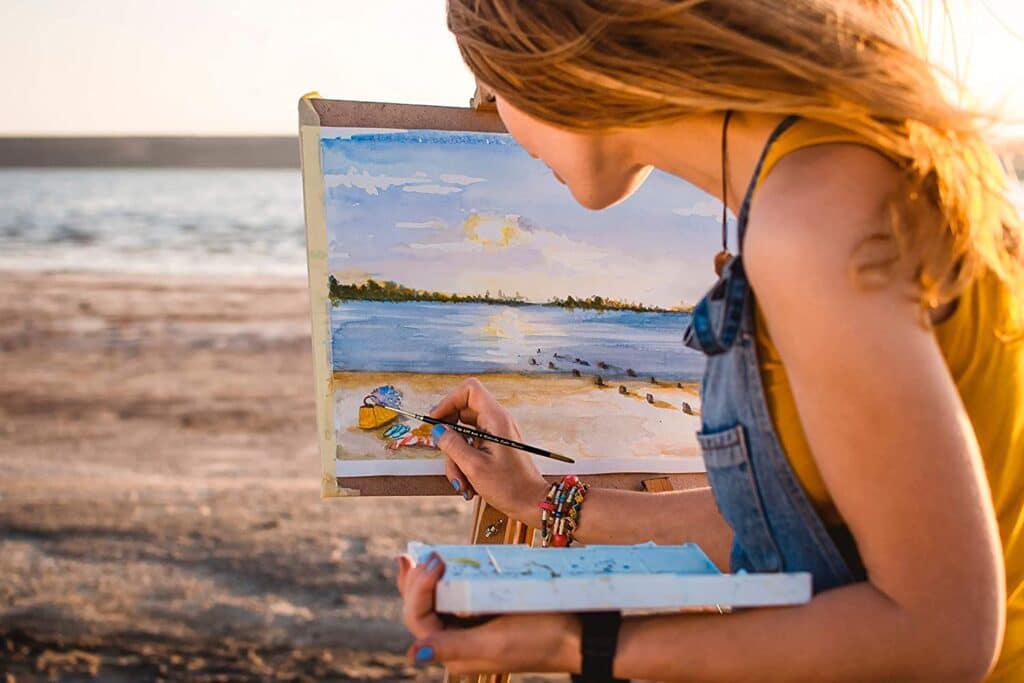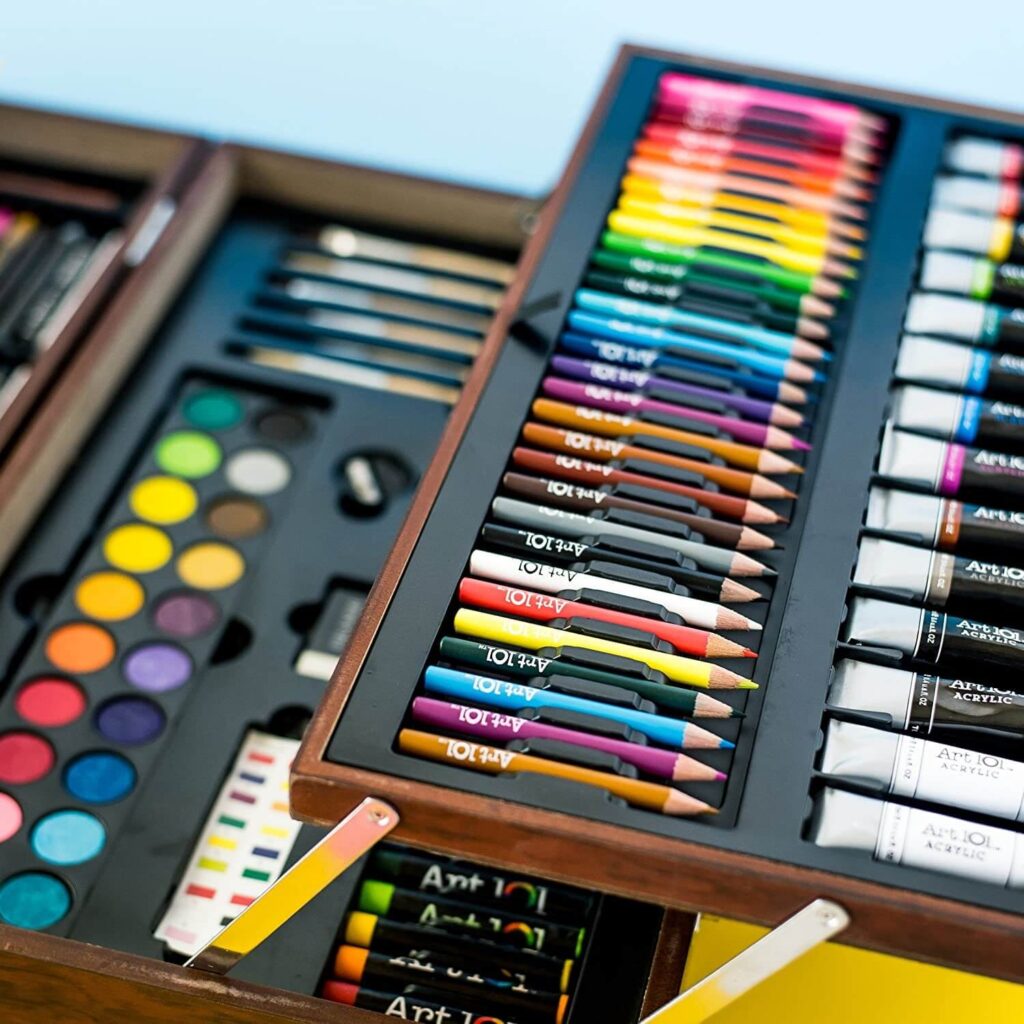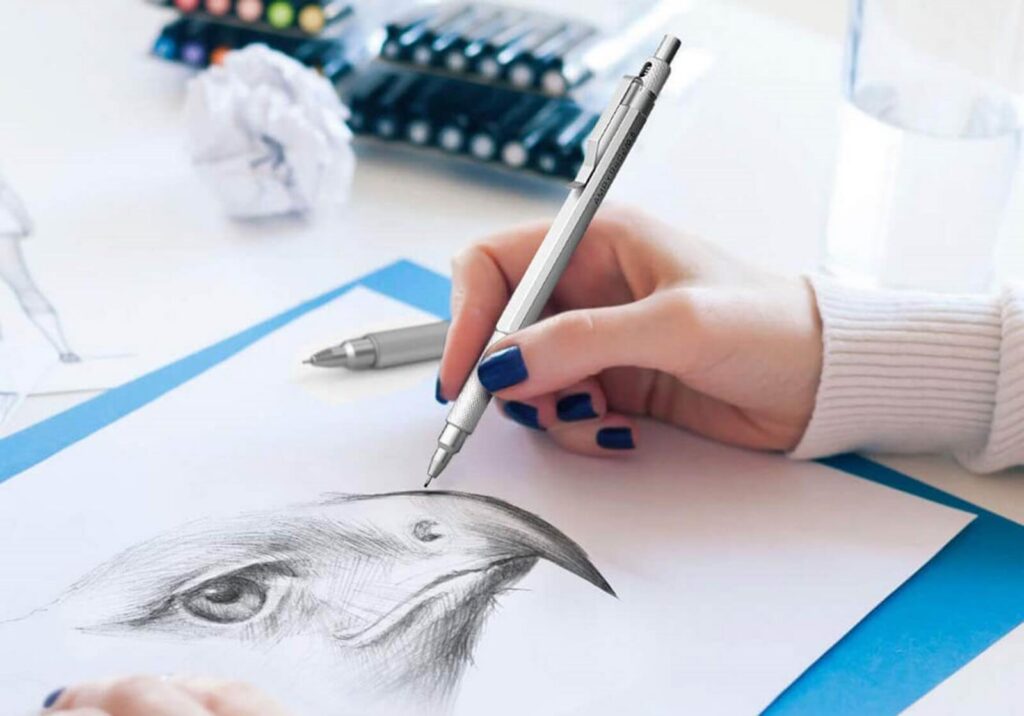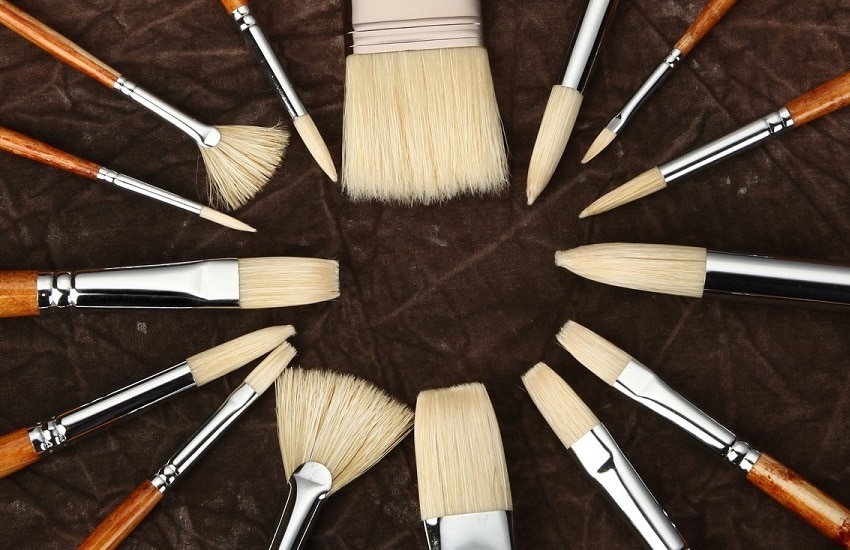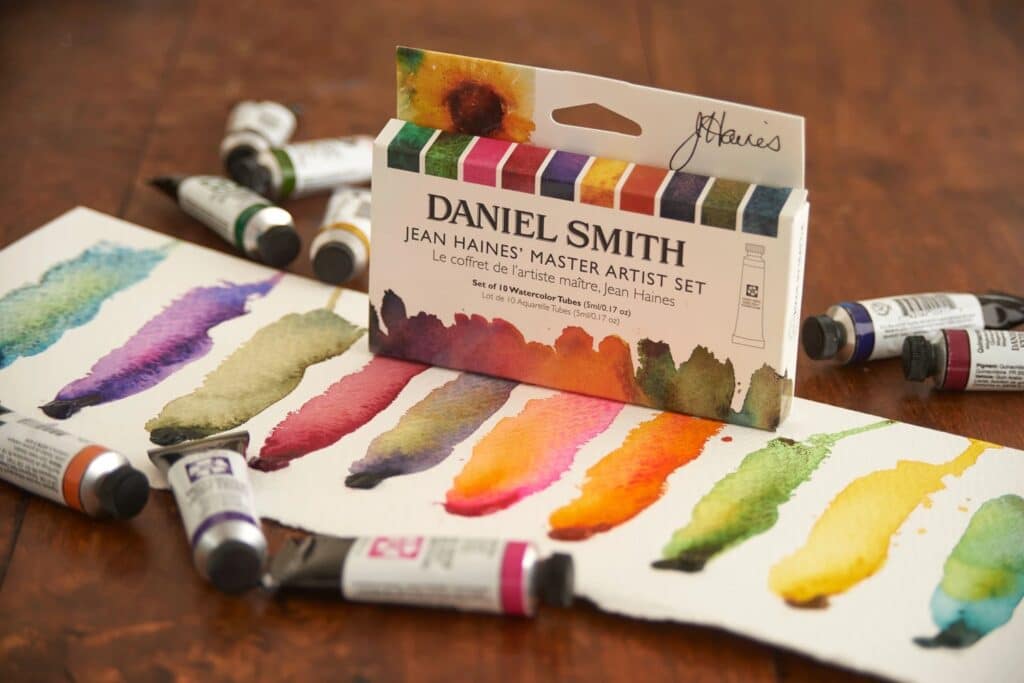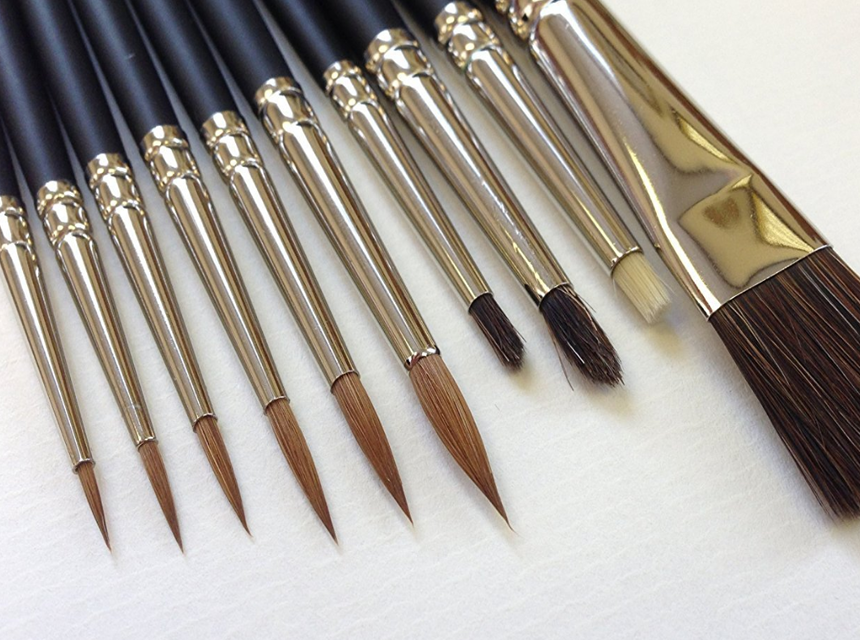

Cleaning paint out of brushes is not the most fun part of painting art and craft. Unfortunately, there’s no way out. Someone has to clean the brushes, or else you’ll be frustrated the next time you have a burst of creativity, and all your brushes are unusable. Besides convenience, cleaning your paintbrushes extends their lifespan. Any avid painter knows what it takes to own a high-quality art set and would therefore go the extra mile to leave their brushes in proper condition for next time use.
So, what happens when you forget or don’t know how to get acrylic paint out of your brushes? A brush with dry acrylic paint on it looks irredeemable, but there is an easy non-toxic, and odorless way of restoring it. This article takes a closer look at the best and easy ways of cleaning acrylic paint brushes and how to keep them in good shape for long. Also, if you use paints to draw a poster of your favorite rock band, then we have prepared a review of these best electronic drum sets especially for you.
Prevention is better than cure is a cliché that will never grow old. It is much easier to clean fresh acrylic paint from a brush than to remove dried acrylic paint from a brush. Washing acrylic paint brushes right after using them is a routine you should pick up as a painter.
All you have to do is have water in a container by your side so you can dip and swirl your brush in it as soon as you are done with it. Here are some tips on how to wash acrylic paintbrushes;
Washing paintbrushes right after using them is a very straightforward routine, but there are days when it will feel like a chore, or you’ll be too distracted to clean up after yourself. It goes without saying that your brushes will have to encounter dried paint at least once in their lifetime unless you are a perfectionist or you tend to them like your babies.
When acrylic paint dries on a brush, removing it with water is nearly an impossible mission. However, it’s not the end of life for your brushes, as there are other ways of saving them. Let’s delve deeper into each of these dried acrylic paint removal options.
Before you get onto dealing with the dried acrylic paint on your brushes, you need to establish what type of bristles are on your brushes. Paintbrush bristles are broadly categorized into 2 types: synthetic and natural.
Synthetic Bristles
The sad reality about synthetic bristles is that it is impossible to get dried acrylic paint from them because they cannot hold up well to the harsh solutions needed to get rid of clumps of paint.
Your best shot would be water and soap before the paint dries. After the paint dries, trying to remove it is a lost cause.
Natural Bristles
Natural bristles, like squirrel, hog, and badger, are better suited for the harsh chemicals used to remove dried paint. Although they are costlier, you are better off investing in the best quality brushes with natural bristles because they offer better longevity and are easy to clean.
When it comes to solutions, you can use to remove dried acrylic paint from brushes you are spoilt for choice. You can use denatured alcohol, ammonia, and lacquer thinner, among others. The most popular solvents used to remove dry acrylic paint from brushes include;
Isopropyl Alcohol
Isopropyl alcohol is the primary component in rubbing alcohol. It is a fantastic choice because it has less odor than other options and works pretty great.
The Vaxxed labs Isopropyl alcohol is the most popular brand of IPA among artists, and the brand claim their product is 99% pure. Most artists prefer it because it is USP-NF medical-grade and can thus be used safely for various cleaning and sterilization purposes.
Acetone, Nail Polish Remover
Acetone is the main component in nail polish removers. You can easily get in cosmetic or medical stores. When you dip your used paintbrush in an acetone solution, the acrylic paint caught on the bristles break out and dissolve in the solvent.
If you are looking to buy acetone and have no idea what to choose from all the available options, check out the Eternal 100% Pure Acetone. It is famous for being 100% pure and professionally formulated. Also, it doesn’t leave any residue.
Be sure to use acetone in a well-ventilated room because it has a pungent smell. Also, keep it away from small children and pets.
After getting either acetone or Isopropyl alcohol, follow this procedure to clean your brushes;
Hand Sanitizing Gel
Your regular hand sanitizing gel, could it get any better? You can use it to clean the debris off your paintbrushes. The chemical makeup of hand sanitizing gel is pretty similar to that of the other solvents mentioned above. It uses ethyl alcohol which can achieve similar results.
The hand sanitizing gel is a top preference for most people because it doesn’t require any apparatus and is easier to use. All you have to do is squeeze a small amount on your hand and rub it on your brush’s bristles until the dried paint dissolves and the debris is removed. All the clumps of paint should come out after repeating the process a couple of times.
The process can get messy because it’s manual. Have some water and soap with you for cleaning your hands and washing the brush as directed above when the dried paint comes out. Alternatively, you can wear some gloves.
Although its pretty easy and fast, the hand sanitizer method is only ideal for small brushes and just a few pieces because it can be tedious and time consuming if you have to clean a couple of brushes.
Brush Cleaning Formula
There are numerous brands of commercial brush cleaners on the market. Some of them can do the job better than even acetone and rubbing alcohol. Although most people with experience argue that the brush cleaners are just acetone and rubbing alcohol re-packaged and re-labeled, it is not true for most brands.
The brush cleaners are made to be harsh on the dried paint, but gentle on the brush bristles. Also, most of them have less odor and aren’t biodegradable.
Murphy’s Oil Soap
Water and soap cannot save your paintbrushes with dried acrylic paint but Murphy’s soap is kind of magical. It is a vegetable oil soap that many expert artists swear by. Here is how to remove dried acrylic paint from your brushes with Murphy’s soap and water:
If you don’t feel like going the chemical route, you can remove the dried clumps of acrylic paint from your brush physically. You can use a fine-tooth old comb to comb out the clumps of dried paint manually. Some artists prefer this method because it is satisfying.
Here is a step by step guideline on how to successfully remove dried acrylic paint from your brushes with a comb:
First off, get a fine-tooth comb. You can also use an old toothbrush or fingernail brush.
The best thing you can do to your brushes is prevent acrylic paint from drying on them. Acrylic paint is one of the fastest drying paints Trusted Source Does Acrylic Paint Dry Fast – Art Passion Online When you want to take up acrylic painting it’s common to ask how quickly it dries. Most people want to know if acrylics dry really quickly or if they dry slowly. artpassiononline.com . It can become rock-solid in a matter of minutes once the water molecules evaporate and only the polymerized pigment is left. On the bright side, the paint is water based and is a breeze to clean with water when it is still fresh on the brush just like water color paints.
There are a few things you can do to prevent your acrylic paint brush from drying and they include:
Pro-tip: don’t soak the brush in water for a long time like overnight. You’d rather do a quick wash under running water because you will end up damaging the bristles.
Every artist should know how to get dried acrylic paint out of brushes because there’s usually that day in the life of an artist when they were just unable to clean their brushes after doing their magic. Brush cleaners, acetone, isopropyl alcohol, hand sanitizer and murphy’s oil soap are the best agents for getting rid of dried acrylic paint from your brushes. Ammonia, lacquer thinners, and denatured alcohol are also highly recommended, but they are not the safest options.
Lacquer thinners and denatured alcohol Trusted Source Lacquer Thinner vs Denatured Alcohol | SawsHub After defining lacquer thinner vs denatured alcohol, we’ll share their similarities, differences and their major differentiating factor. sawshub.com emit methanol which is toxic. Ammonia has a pungent smell and can compromise the quality of your brushes. All considered, the best paintbrush routine is cleaning as you go to avoid having dried paint on them. It is more convenient in terms of time and money and it keeps the brushes pristine for longer.
